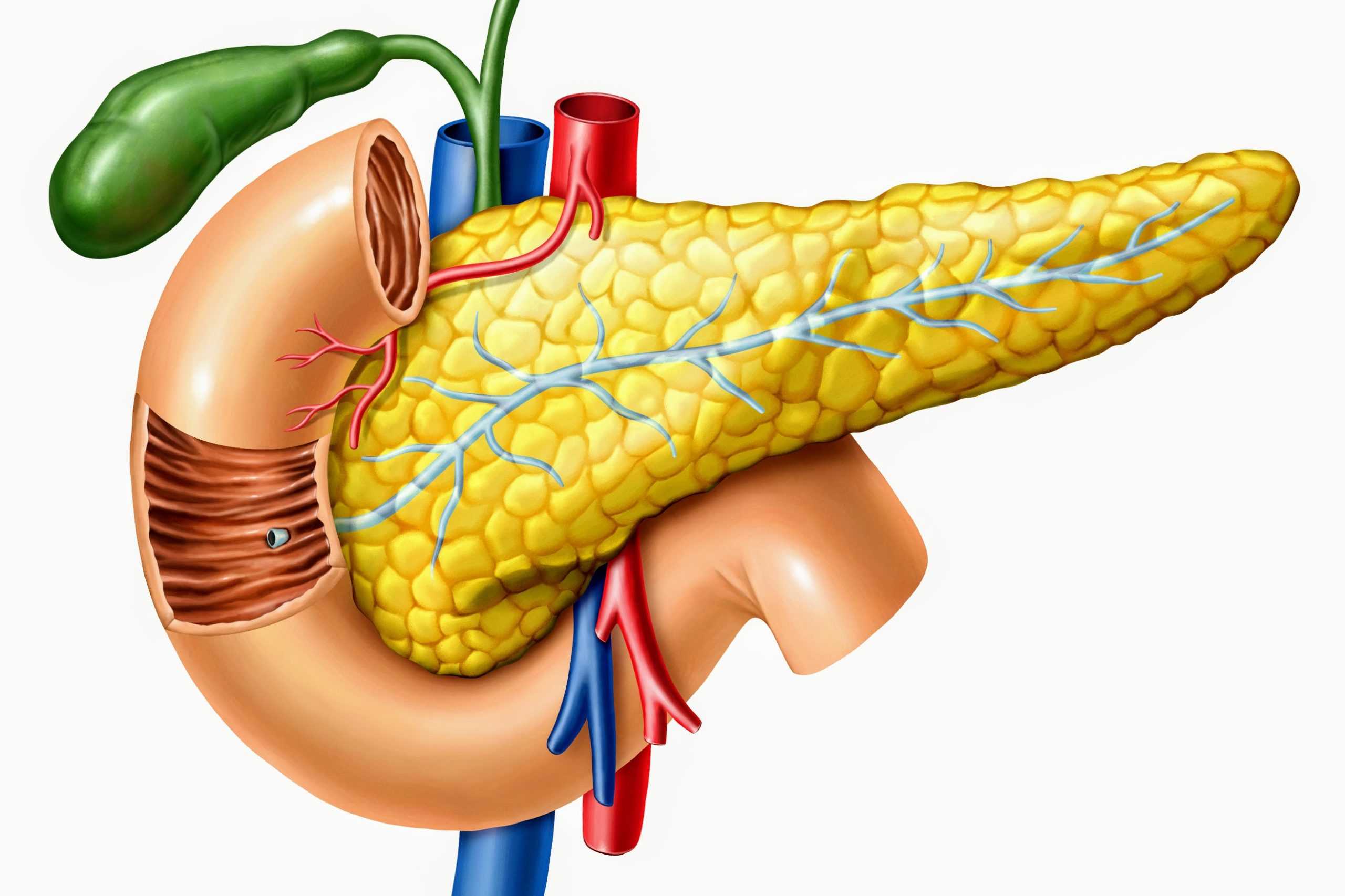The Pancreas Produces Digestive Enzymes and Hormones Including Insulin
On This Page: The Function of The Pancreas
Jump To Section
The Purpose, Role, Function and Anatomy of The Pancreas
Written By Tony Subia
December 2021
Anatomy of The Pancreas and Where The Pancreas is Located
Most people know the role, function and purpose of the more well-known body organs such as the heart, lungs. and kidneys. But fewer are familiar with the pancreas and its dual role, purpose, and vital functions it provides to the human body. The location of the pancreas is behind the stomach and is divided into three sections including its head, body, and tail.
Since the pancreas is sandwiched between the stomach and the spine deep within the abdomen, any existing tumor would be difficult to be felt with a surface, “hand felt” examination. This is one reason that could delay the early detection of pancreatic cancer. Pain is not impressive until a potential tumor has grown to a size large enough to cause pain and interfere with its normal dual functions of the pancreas.
The average adult size of the pancreas is about 6 to 8 inches long, about 2 inches wide with an average weight of about one-fifth of a pound.
Anatomy of the Pancreas (Yellow Area)
What Are The Dual Functions and Purposes of the Pancreas?
A healthy, proper functioning pancreas provides two crucial roles and functions. It produces digestive enzymes to break-down fats, carbohydrates, and proteins. The other function of the pancreas is to create and provide hormones that properly regulates healthy blood sugar levels. The digestive function of the pancreas is referred to as the “ Exocrine Function” and the hormonal function of the pancreas is referred to as the“Endocrine Function”
1. THE EXOCRINE FUNCTION OF THE PANCREAS: “THE DIGESTION FUNCTION”
The pancreas contains “exocrine glands” which produce “specific digestive enzymes” to regulate food digestion. The pancreas helps the intestines absorb nutrients from food intake by the secreting digestive enzymes which break down the main dietary food components which include carbohydrates (starch), proteins, and fats. The types of pancreatic enzymes are as follows;
> Anylase. Enzymes that break-down carbohydrates or starches into glucose (sugar) molecules.
> Protease. Enzymes that break-down proteins into amino acid. Helps keep bacteria out of the intestines.
> Lipase. Enzymes that work with liver bile to break-down fats. Helps sustain fat-soluble vitamins A, D, E, , and K.
How the Exocrine Function of The Pancreas Performs. When food enters your stomach, pancreatic created digestive juices are released into the pancreatic duct. That duct joins with the common bile duct to create what is known as the “Ampulla of Vater” located at the duodenum which is the first portion of the small intestine.
The common bile duct originates in the liver as well as the gallbladder to produce “bile” which is also is a digestive juice. Both the pancreatic enzymes and bile enter the duodenum to initiate the digestion of fats, carbohydrates, and proteins.
Initially the pancreas secretes enzymes in an “inactive form” which travels down the pancreatic duct which merges with the bile duct where they enter the duodenum. Once the enzymes enter the duodenum, they are “activated” and join the bile from the gall bladder to break-down food components. At that time, the pancreas also secretes bicarbonate to neutralize stomach contents once they enter the small intestine.
Pancreatic exocrine tumors represent about 93% of pancreatic cancers of which “Adenocarcinoma” accounts for over 90% of pancreas cancers. Generally, when people speak of “pancreatic cancer”, they typically are referring to
mean Pancreatic Ductal Adenocarcinoma Cancer which is the most deadly type of pancreatic cancer which has the lowest survival rate of all major types of cancers.
2. THE ENDOCRINE FUNCTION OF THE PANCREAS
Essentially, the Endocrine Function maintains proper blood sugar levels which is crucial to the proper functioning of other organs such as the liver, kidneys, and the brain. The endocrine component of the pancreas is comprised of “islet cells” (Islets of Langerhans) which creates and releases hormones into the bloodstream.
The main two types of hormones are “insulin” and “glucagon”. Insulin acts to lower blood sugar levels and “glucagon” acts to raise blood sugar levels. There is a third type of hormone, “somatostatin” of which its role is regulating and balancing the desired levels of blood sugar (glucose).
Pancreatic Neuroendocrine cancerous tumors, often referred as PNET tumors, is a group of cancers that occur in the endocrine cells of the pancreas are also known as “islet cell cancers”. This group of cancers represents only about 7% of pancreas cancers. Pancreatic Neuroendocrine Cancer is considered less much aggressive versus pancreas exocrine (digestive) types of cancers. Also see “types of pancreas cancers“.
Summary of Questions Most Asked about the Pancreas
At one time few people paid attention to the pancreas and its functions. Today more people are aware of the pancreas and pancreatic cancer since it accounts for one-third of all cancer related deaths. It has the worst survival rates of all major cancers and its incidence rate is growing.
People are more aware of where the pancreas is located and have become more interested in what purposes the pancreas serves to a healthy body. The pancreas has two primary purposes including pancreas role of producing digestive enzymes and the pancreas production of insulin and other hormones to control the proper levels of blood sugar.
This article discusses the dual roles of the pancreas including the Exocrine and Endocrine functions of the pancreas. The Exocrine role is producing digestive enzymes whereas the Endocrine role is producing hormones regulation with a primary purpose of regulating proper levels of blood sugar. This information is only provided for educational purposes and is not intended as medical advice. Always consult your medical providers with for medical advice.



